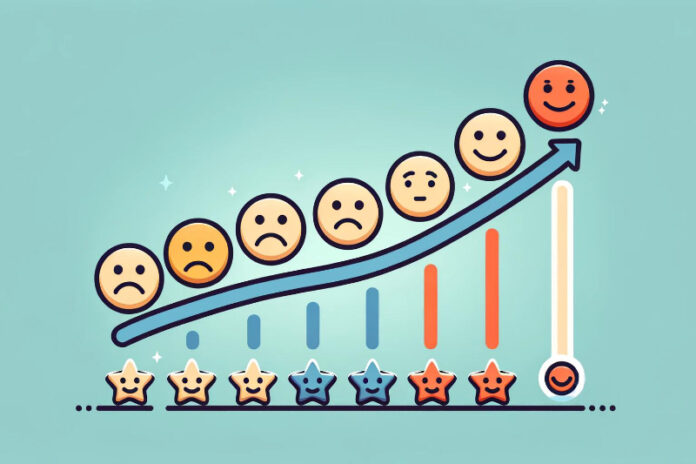When it comes to customer experience (CX), people always seek outstanding service. If a service causes more delays than it solves problems, customers won’t hesitate to abandon a brand — even a trusted one — quickly and decisively.
This is where AI bridges the gaps in CX, empowering internal teams with faster customer insights than before, and on the other end, ensuring that clients feel valued across channels.
During a recent Zoom online panel, Kelly Fisk, Chief Corporate Affairs & Marketing Officer at Australian software firm Iress, and Rahul Rupani, Product Owner at Lenskart, an Indian eyewear retail chain, discussed various business challenges and how AI has influenced their customer experience strategies.
Never enough
Fisk notes that customers’ expectations of their service providers are continually rising, as they frequently compare these services to top-performing apps on their smartphones.
“Even though we work in a complex industry and create powerful B2B software, our customers expect a seamless user experience. They want it to be as easy as grabbing their phone, dialling up an Uber, and tracking the Uber until it picks them up,” she said.

This is why Iress, which provides software to financial institutions, strives to maintain the sophistication and functionality of its products with a user experience that is smooth and efficient.
“From a support perspective, we don’t just create software and release it out into the world. Our goal is to help our customers get the most out of our products, whether they’re encountering difficulties or seeking advice for enhanced usage. This requires our support and account management teams to possess extensive knowledge and to collaborate efficiently. They are dealing with highly technical and complex software used in similarly complex industries,” Fisk explained.
To achieve this, Iress teams must access a substantial amount of information, collate it, involve colleagues globally to get the right answer, and respond to customers within a specified timeframe. Here, Zoom’s Contact Center proved to be invaluable.
“The team has seen significant improvements in their operational health; their collaboration has become more efficient. One notable advantage is their ability to quickly identify trends from incoming calls, which often show recurring issues. This allows for swift communication with the product team to address the underlying causes. Additionally, it enables the quick deployment of more agents when there’s a spike in calls or specific issues arise,” the executive observed.
In India, the distribution of optometrists varies greatly, with some regions having an excess and others facing a shortage or having none at all.
Lenskart, which aims to be more than just an eyewear brand, sought to make quality vision correction services accessible to everyone in the country. This was facilitated by introducing remote eye tests, co-developed with Zoom’s Contact Center solutions, at their physical stores.
“When a customer comes in for an eye test, they enter a clinic we have set up within the store. They sit in a designated area, facing a large screen that uses Zoom’s video technology to conduct the eye test. While a staff member assists in person, the primary interaction and the eye test are conducted remotely via Zoom,” Rupani detailed.
According to Rupani, remote eye tests have successfully replicated the in-person experience with an optometrist, leading to customer reports of feeling as though the doctor was physically present.
“It is crucial for the overall customer experience that customers feel engaged and trusting during their remote eye tests,” Rupani added.
Rewriting the rules
As Lenskart continues to expand its operations, its remote eye test tool — which runs on Zoom Contact Center — has become increasingly useful.
With Zoom’s AI capabilities integrated into the Contact Center solution, Lenskart said it can more effectively analyse and understand the customer experience during each remote eye test.
“We’re able to analyse the type of questions the customer asks, and whether the optometrist is adhering to the prescribed guidelines and procedures for conducting the eye test. Otherwise, it would have required a significant manual effort, involving recording videos and reviewing them to assess the efficiency of the experience. However, with AI, we save a considerable amount of time. We can easily evaluate the type of experience our customers receive and identify areas where we need to enhance our service,” Rupani said.

Meanwhile, Iress is adopting a cautious approach to AI, given the stringent regulations in the financial sector. However, this has not stalled innovation at the software firm.
“Within Iress, we’ve been experimenting with how to leverage AI in our products to help our customers access information or complete tasks more quickly and easily. We’ve also developed an RFP bot internally, which could save hundreds of thousands of dollars by reducing the time spent on these tasks,” Fisk shared.
The executive elaborated: “We trained an AI engine to review every RFP we’ve ever processed and provide a starting point by suggesting, ‘Here are your 10 questions. This is what we’ve previously said, and you can take it from here.’ Importantly, one wouldn’t just send that off to the customer. Each response requires a critical review to ensure it’s the correct and relevant answer for that customer, but I love this idea. It represents a significant efficiency gain.”
Lasting solutions
Recognising that different customers have diverse needs, Iress focuses on providing a consistent omnichannel experience while maintaining a personalised human connection in an increasingly automated business environment.
“If a stockbroker is unable to place a trade, that’s a big problem. Likewise, if a financial advisor can’t support their clients with crucial matters, they won’t want to just use chat; they’ll need to speak directly to someone to resolve issues immediately because their business depends on it. This necessitates a thorough examination of the entire lifecycle and the role each piece of technology plays,” Fisk said.
Through Zoom’s Contact Center, Iress’s teams can now better visualise customer data, manage queues more efficiently, perform quality control, and provide staff coaching.
Furthermore, Iress has addressed its previous issues with service outages.
“We were having a lot of outages with our previous provider. I don’t think there’s anything more important than ensuring that when someone needs to get through to a contact centre, the centre is available to take the call. That improvement has been amazing for us,’ the Iress executive continued.”
As for Lenskart, features like video-based call routing allow customers to connect with available optometrists promptly. Additionally, the company has developed a streamlined solution within Zoom Contact Center for its general staff, designed for those who aren’t as tech-savvy.
Ultimately, Lenskart’s collaboration with Zoom enabled the launch of the remote eye test tool in just three months.
“This would have taken much longer otherwise. As we speak, I know that somewhere in the country, a customer is having their eye test over Zoom right now,” Rupani concluded.



